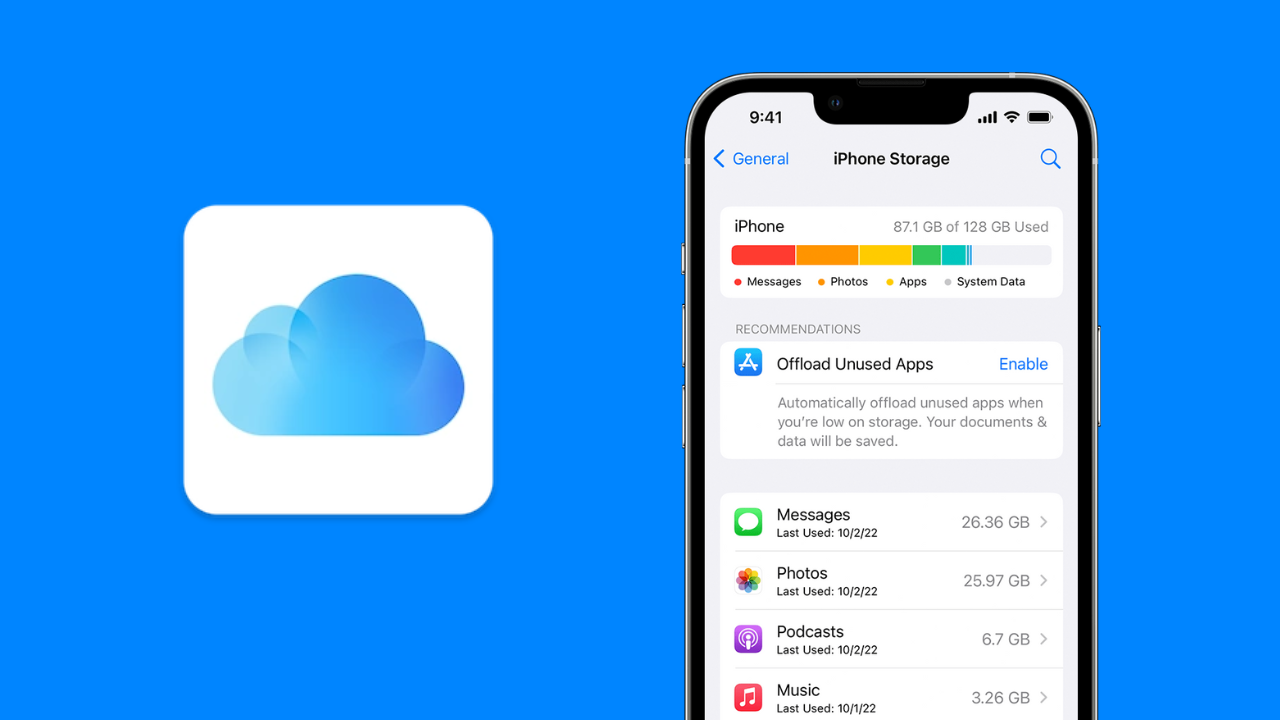iCloud storage is a cloud-based storage service offered by Apple Inc. It allows users to store and access their data on Apple’s servers, including photos, videos, documents, and music. iCloud storage is integrated with Apple’s operating systems, such as iOS and macOS, and can be accessed through various devices, including iPhones, iPads, Macs, and PCs.
In this article, we’ll show you how to increase your iCloud storage from 5GB to 50GB for free without purchasing subscription plans.
How to Increase your iCloud Storage from 5GB to 50GB?
There are many methods to increase your iCloud storage for free, Here are some options on how to increase your iCloud storage space:
MobUpgrade Service: This service allows you to increase your iCloud storage from 5GB to 50GB on your iPhone, or iPad for free just by inserting your device IMEI, No subscription is needed, and no need to purchase anything. what is great about this tool is you can increase your storage without connecting your device to any software and without entering any information about yourself.
Delete old and unnecessary data: You can free up some space by deleting old or unnecessary data like old backups, photos, and videos, documents, and email attachments. You can do this by going to Settings > [your name] > iCloud > Manage Storage > Backups or Photos or Documents, and deleting the files you no longer need.
Use iCloud Photo Library: If you have a lot of photos and videos, using iCloud Photo Library can free up space on your device while keeping your photos and videos safely stored in iCloud. To enable iCloud Photo Library, go to Settings > [your name] > iCloud > Photos > iCloud Photos.
Optimize storage: You can also optimize storage on your device by enabling the “Optimize Storage” feature in iCloud Photos. This feature will automatically reduce the size of your photos and videos on your device, freeing up space.
Use other cloud storage services: If you need more storage than what iCloud offers, you can consider using other cloud storage services like Google Drive, Dropbox, or OneDrive.
Use external hard drives: If you have a lot of data that you don’t need access to regularly, you can use an external hard drive to store them instead of using iCloud storage.
Overall, increasing your iCloud storage space is easy and can be done in a variety of ways. Choose the option that works best for your needs.
If you’re already using iCloud+ and have a paid subscription you can cancel it and use the free method above by increasing your iCloud storage using MobUpgrade.com, this option works on all devices and for a lifetime without having to pay on a monthly basis or use external storage services.
How to Easily Cancel Your iCloud+ Subscription on Your iPhone
You can cancel your iCloud+ subscription on your iPhone by following these steps:
- Open the Settings app on your iPhone.
- Tap on your name at the top of the screen.
- Tap on “Subscriptions”.
- Tap on “iCloud+”.
- Tap “Cancel Subscription”.
- Follow the prompts to confirm the cancellation.
Once you have completed these steps, your iCloud+ subscription will be canceled and you will no longer be charged for it. Your account will continue to have access to the iCloud storage space associated with your subscription until the end of the current billing cycle.
What is iCloud+?
iCloud+ is a subscription service offered by Apple that enhances the features and capabilities of the standard iCloud service.
It includes additional features such as Private Relay, which encrypts all internet traffic leaving your device and provides enhanced privacy protection; Hide My Email, which lets you create unique, random email addresses that forward to your actual email address and helps protect your privacy by preventing spammers and marketers from getting your real email address; and expanded storage options for iCloud backups, iCloud Drive, and iCloud Photos.
iCloud+ also includes additional security features such as the ability to set up an iCloud Private Relay and Hide My Email. The service is available for a monthly or annual fee and can be managed through the iCloud settings on your Apple device.





